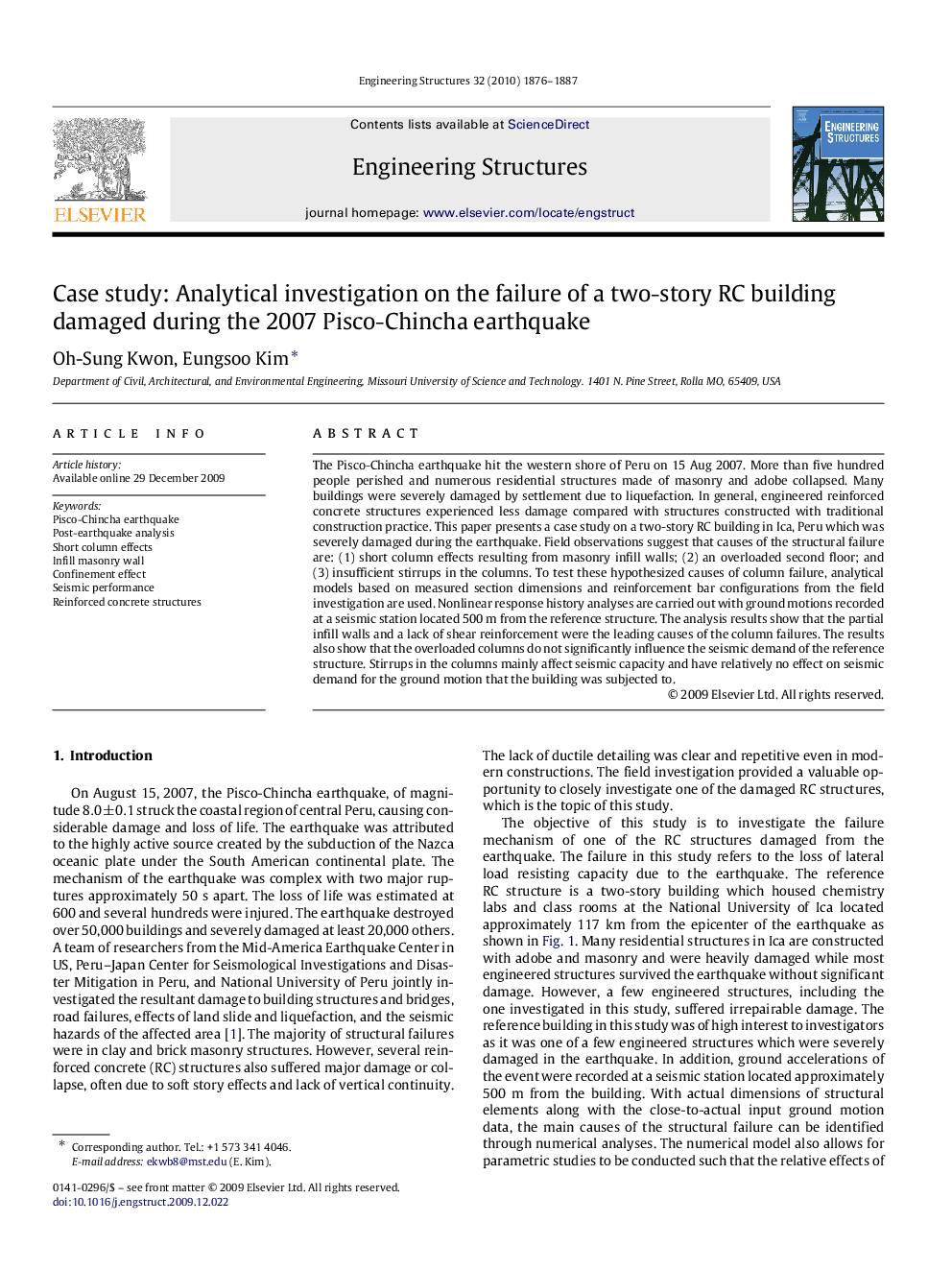| Article ID | Journal | Published Year | Pages | File Type |
|---|---|---|---|---|
| 267802 | Engineering Structures | 2010 | 12 Pages |
The Pisco-Chincha earthquake hit the western shore of Peru on 15 Aug 2007. More than five hundred people perished and numerous residential structures made of masonry and adobe collapsed. Many buildings were severely damaged by settlement due to liquefaction. In general, engineered reinforced concrete structures experienced less damage compared with structures constructed with traditional construction practice. This paper presents a case study on a two-story RC building in Ica, Peru which was severely damaged during the earthquake. Field observations suggest that causes of the structural failure are: (1) short column effects resulting from masonry infill walls; (2) an overloaded second floor; and (3) insufficient stirrups in the columns. To test these hypothesized causes of column failure, analytical models based on measured section dimensions and reinforcement bar configurations from the field investigation are used. Nonlinear response history analyses are carried out with ground motions recorded at a seismic station located 500 m from the reference structure. The analysis results show that the partial infill walls and a lack of shear reinforcement were the leading causes of the column failures. The results also show that the overloaded columns do not significantly influence the seismic demand of the reference structure. Stirrups in the columns mainly affect seismic capacity and have relatively no effect on seismic demand for the ground motion that the building was subjected to.
